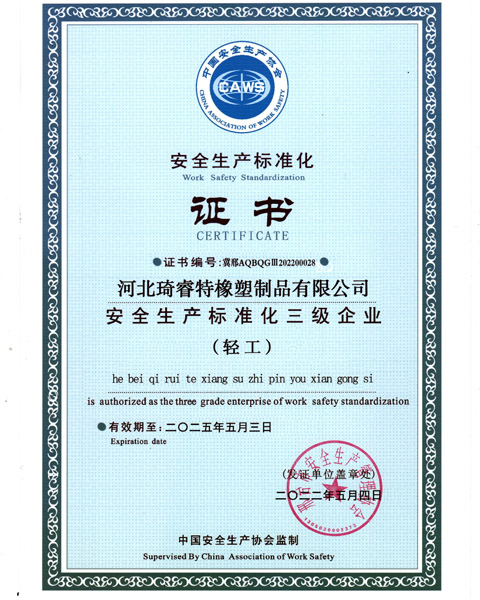r134a charging hose with gauge
Understanding R134A Charging Hoses with Gauges
In automotive air conditioning systems, refrigerants play a critical role in ensuring that vehicles remain cool and comfortable, particularly during hot months. R134A is one of the most commonly used refrigerants in many cars, especially those manufactured after 1994. If you're looking to maintain or recharge your vehicle's air conditioning system, understanding the R134A charging hose with a gauge is essential. In this article, we will explore the importance of R134A charging hoses, how to use them, and some safety tips.
What is an R134A Charging Hose?
An R134A charging hose is a specialized tool designed to transfer refrigerant into an air conditioning system. It is equipped with pressure gauges that allow users to monitor the system's pressure and ensure the correct amount of refrigerant is added. The charging hose typically consists of a flexible rubber or plastic pipe with a connector that attaches to the service port of the air conditioning system, and the other end has a connector for a refrigerant canister.
The gauge on the charging hose provides critical information regarding the pressure inside the system. Accurate pressure readings are vital because too much or too little refrigerant can cause the system to malfunction, leading to inadequate cooling or even serious component damage.
The Importance of Proper Charging
Charging an air conditioning system with the correct amount of R134A refrigerant is crucial for achieving optimal performance. Overcharging can lead to higher pressures within the system, which can cause the compressor to fail. Conversely, undercharging may lead to poor cooling performance, increased energy consumption, and potential damage to the evaporator coil.
How to Use an R134A Charging Hose
Before you begin, ensure you have the following
1. R134A refrigerant canisters 2. R134A charging hose with gauge 3. Safety goggles and gloves 4. A thermometer to check vent temperatures
Step 1 Safety First Before starting, wear safety goggles and gloves to protect yourself from any accidental refrigerant exposure. Work in a well-ventilated area to avoid inhaling any fumes.
r134a charging hose with gauge

Step 2 Connect the Hose Locate the low-pressure service port on your AC system. This port is typically on the larger diameter aluminum line. Remove the cap and attach the blue side of the charging hose (which connects to the low-pressure side) to it. Ensure it’s securely fastened to prevent leaks.
Step 3 Check System Pressure The gauge on the hose will show the current pressure of the AC system. Make sure the vehicle is turned on, and the AC is set to the maximum cool setting. This step allows you to read the pressure effectively. Compare the reading to the specifications provided in your car’s manual.
Step 4 Charge the System If needed, attach the refrigerant canister to the charging hose. Open the valve slowly and allow refrigerant to flow into the system. Continuously monitor the gauge to avoid overcharging. It’s crucial to charge the system gradually, checking the pressure throughout the process.
Step 5 Monitor Temperatures Use a thermometer to monitor the air temperature from the AC vents. The air should be significantly cooler if the system is adequately charged. If cooling is insufficient, you may need to repeat the process or check for leaks.
Step 6 Disconnect and Cap Once you’ve finished charging the system, close the valve on the refrigerant canister, disconnect the hose, and replace the service port cap. Be sure to store any leftover refrigerant properly.
Safety Tips
1. Do Not Overcharge Always be aware of the manufacturer’s recommended refrigerant levels. 2. Leak Check If you suspect that your system is not holding refrigerant, consider having it checked for leaks by a professional.
3. Proper Disposal R134A is a regulated substance; ensure that you dispose of any leftover refrigerant in accordance with local environmental laws.
4. Use Quality Tools Always use high-quality charging hoses and gauges to ensure accuracy and minimize the chances of leaks.
Conclusion
Using an R134A charging hose with a gauge is a valuable skill for anyone looking to maintain their vehicle’s air conditioning system. By understanding how to properly charge the system and monitor pressures, you not only extend the life of your air conditioning system but also ensure a comfortable ride. Remember to prioritize safety and consult a professional mechanic if you encounter any issues outside your expertise.
-
Ultimate Spiral Protection for Hoses & CablesNewsJun.26,2025
-
The Ultimate Quick-Connect Solutions for Every NeedNewsJun.26,2025
-
SAE J1401 Brake Hose: Reliable Choice for Safe BrakingNewsJun.26,2025
-
Reliable J2064 A/C Hoses for Real-World Cooling NeedsNewsJun.26,2025
-
Heavy-Duty Sewer Jetting Hoses Built to LastNewsJun.26,2025
-
Fix Power Steering Tube Leaks Fast – Durable & Affordable SolutionNewsJun.26,2025

